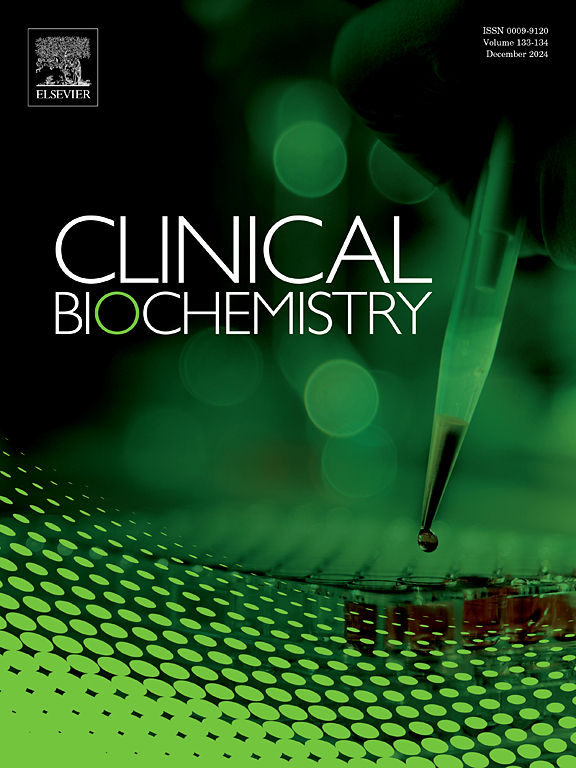Vascular endothelial growth factor A, a potential non-invasive biomarker for metabolic dysfunction-associated steatotic liver disease progression
IF 2.1
3区 医学
Q2 MEDICAL LABORATORY TECHNOLOGY
引用次数: 0
Abstract
Introduction and Objectives
Liver fibrosis is the primary predictor of complications in patients with metabolic dysfunction-associated steatotic liver disease (MASLD). However, there are currently no non-invasive prognostic tests to stratify patients at risk for hepatic fibrosis progression. This study aimed to explore whether plasma proteins could serve as non-invasive biomarkers for monitoring MASLD disease progression.
Materials and Methods
Blood plasma protein analysis was performed on samples from a long-term follow-up study of patients with MASLD with repeated liver biopsies. Over 1100 proteins covering a broad range of biological processes were analyzed using 13 Olink® Target 96 panels. Protein level changes were compared between the different time points and between patients with or without an increase in the liver fibrosis stage between the two biopsies.
Results
Increased vascular endothelial growth factor A (VEGFA) plasma levels were significantly associated with liver fibrosis progression in patients with a histologically assessed increase in the fibrosis stage.
Conclusions
These findings suggest that the plasma protein VEGFA may be an effective biomarker for monitoring fibrosis progression in patients with MASLD.
血管内皮生长因子A,代谢功能障碍相关脂肪变性肝病进展的潜在非侵入性生物标志物。
简介和目的:肝纤维化是代谢功能障碍相关脂肪变性肝病(MASLD)患者并发症的主要预测因素。然而,目前尚无无创预后试验对肝纤维化进展风险患者进行分层。本研究旨在探讨血浆蛋白是否可以作为监测MASLD疾病进展的非侵入性生物标志物。材料和方法:对反复肝活检的MASLD患者的长期随访研究样本进行血浆蛋白分析。使用13个Olink®Target 96面板分析了1100多种蛋白质,涵盖了广泛的生物过程。比较不同时间点之间的蛋白质水平变化,以及两次活检中肝纤维化阶段增加或未增加的患者之间的蛋白质水平变化。结果:血管内皮生长因子A (VEGFA)血浆水平升高与肝纤维化进展显著相关,组织学评估纤维化阶段增加。结论:这些发现表明血浆蛋白VEGFA可能是监测MASLD患者纤维化进展的有效生物标志物。
本文章由计算机程序翻译,如有差异,请以英文原文为准。
求助全文
约1分钟内获得全文
求助全文
来源期刊

Clinical biochemistry
医学-医学实验技术
CiteScore
5.10
自引率
0.00%
发文量
151
审稿时长
25 days
期刊介绍:
Clinical Biochemistry publishes articles relating to clinical chemistry, molecular biology and genetics, therapeutic drug monitoring and toxicology, laboratory immunology and laboratory medicine in general, with the focus on analytical and clinical investigation of laboratory tests in humans used for diagnosis, prognosis, treatment and therapy, and monitoring of disease.
 求助内容:
求助内容: 应助结果提醒方式:
应助结果提醒方式:


